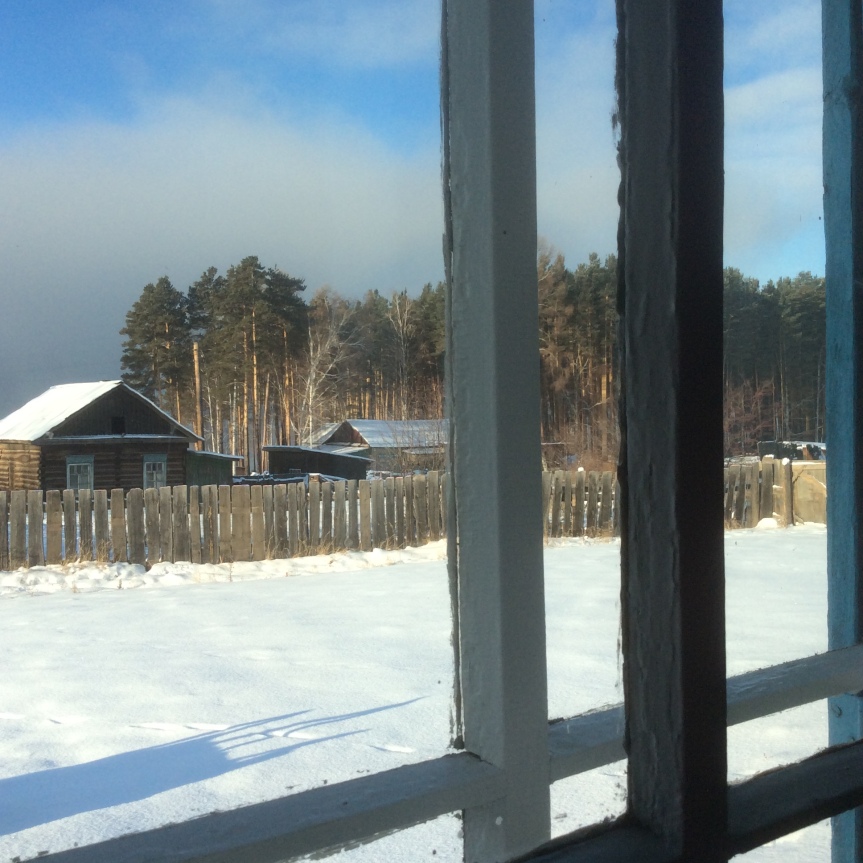The village of Anosovo sprung to life on the wave of Soviet industrialization. The Bratsk hydroelectric station and a massive dam flooded vast territories and displaced almost two hundred fifty settlements. Valentin Rasputin wrote about the painful for many process of relocation in Farewell to Matyora. In Farewell, some people moved to the city, and some were dispersed elsewhere. In reality, centrally planned settlements on the shore of the Angara River, like Anosovo, materialized. These settlements were much bigger than the villages and on a distance from one another unsurmountable by foot. Before the flood, the small villages were at walkable distance and populated the stretch of the shore. Today, some of them, with the population drastically dwindling, appear unviable to an eye of an indifferent observer.
Anna Razuvalova, who offered a socio-cultural reading of “village prose” as a way of self-description of neocons rather than from the positions of its poetics or narratives more traditional for the literary criticism in Russia, observed some of the polarity in which “village prose” is perceived in the contemporary Russian literary world. “For some part of the readers with the Soviet cultural background they [village prose writers] are still the phenomenon not as much of the literary as much of the social sphere, “imaginary” units that arose in the atmosphere of the false late Soviet hypermoralism, and for others, they are the contemporary classics who created convincing artistic worlds which told about the “eternal” (about soul, memory, life, and death), and confine them to the limits of socio-ideological collisions means not see what is most important about them” (Razuvalova 2015, Location 91 in Kindle edition).
But the polarity which she formulated strikes me as pertaining to a tiny literary world—the greater polarity in relation to Rasputin is dismissing his writings outright as not having any importance today versus embracing his teachings wholeheartedly, including the “socio-ideological collisions,” without any need or feel to separate his ideological teachings from his artistic works. It is the latter embrace on which Parthé comments in observing how Rasputin influenced the neocon neofascist contexts while arguing that he was not their primary nor only influence. It is difficult indeed to read Rasputin as a humanist considering that he was one of the prominent sources of the hateful patriarchal and nationalist ideologies. The question resurfaces whether one should even attempt to do so. At the same time, the official discourse of Rasputin follows the grid of the official discourses in Russia by presenting a sanitized version of this figure: it does not address any problematic aspects of Rasputin’s oeuvre at all, as if it does not exist, or acknowledges it in passing as inconsequential to the main contribution of the writer who is unequivocally praised.
Razumova shrewdly remarks that “traditionalist” interpreters assume that their aesthetic readings of the village prose as a “traditionalist” phenomenon are correct. It made me think that, perhaps, stylistically we can read the village prose as not “traditional” but rather an “avant-garde” prose reinventing the Russian language fusing it with the skaz manner and populating the text with rare colloquialisms to create an image of the rural imaginary world as a cradle of virtue, traditions, and roots, and the arena of the human drama—the world doomed to the capitulation to the industrialism and the city, and yet the one which carries within itself the light of truth and simplicity. Many village prose writers have this kind of density of the language that renders translations bland for some and “finally readable” for others. But such a reading would make Rasputin into the avant-gardist or experimenter with neofascist ideas, which perhaps is an apt definition of a “conservator” in general.


